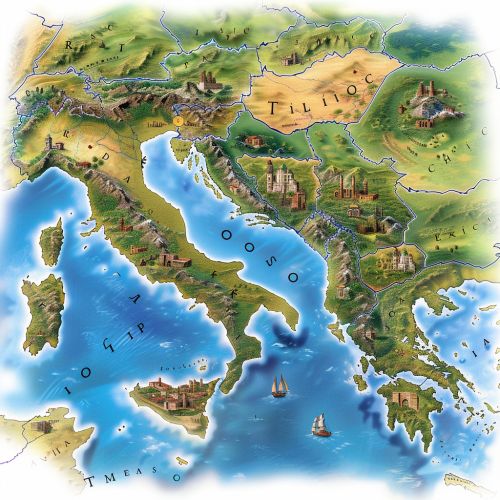Italic languages
Introduction
The Italic languages are a subfamily of the Indo-European languages that were spoken in the Italian peninsula before the establishment of the Roman Empire. This group of languages includes Latin, from which the Romance languages descended, and a number of extinct languages such as Umbrian, Oscan, and South Picene.


Origins and Classification
The Italic languages are part of the Centum languages, which are a group of Indo-European languages that distinguished themselves by preserving the palatal series of the proto-language as velars. The Italic languages are one of the major branches of the Indo-European language family, alongside Celtic, Germanic, Balto-Slavic, and others.
The Italic languages are further divided into two main branches: the Latino-Faliscan and the Sabellian (also known as Osco-Umbrian). The Latino-Faliscan branch includes Latin and Faliscan, while the Sabellian branch includes Oscan, Umbrian, and several other extinct languages.
Latino-Faliscan Languages
Latin
Latin is the most well-known and extensively studied Italic language. Originating in the Italian region of Latium, Latin became the dominant language of the Roman Empire, which led to its evolution into the Romance languages, including Italian, French, Spanish, Portuguese, and Romanian.
Faliscan
Faliscan was closely related to Latin, with some scholars considering it a dialect of Latin rather than a separate language. It was spoken in the region of Falerii, in what is now modern-day Lazio. Faliscan became extinct around the 1st century AD, with very few inscriptions surviving.
Sabellian Languages
The Sabellian languages, also known as Osco-Umbrian languages, include Oscan, Umbrian, and several other extinct languages. These languages were spoken in central and southern Italy before the spread of Latin.
Oscan
Oscan was the most widely spoken of the Sabellian languages, used in the southern part of the Italian peninsula. Oscan was written in an alphabet derived from the Etruscan alphabet, and several inscriptions in Oscan have been found.
Umbrian
Umbrian was spoken in the region of Umbria, in what is now central Italy. Like Oscan, Umbrian was written in a script derived from the Etruscan alphabet. The most important surviving document in Umbrian is the Iguvine Tables, a religious text.
Extinct Italic Languages
In addition to the major Italic languages, there were several other languages in this family that are now extinct. These include South Picene, Marsian, Volscian, and others. These languages are known from inscriptions and names in ancient texts, but very little of their grammar or vocabulary has survived.
Influence and Legacy
The Italic languages, particularly Latin, have had a significant influence on the development of many modern languages. The Romance languages, which are direct descendants of Latin, are spoken by hundreds of millions of people worldwide. In addition, Latin has influenced the vocabulary of many other languages, including English, through the transmission of scientific, legal, and religious terminology.
